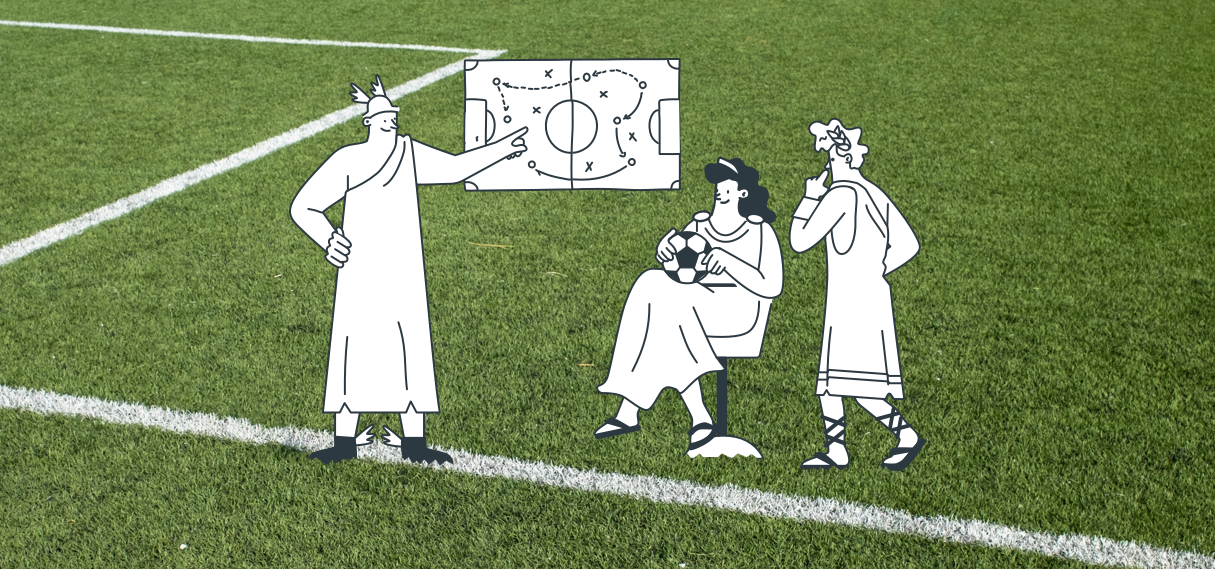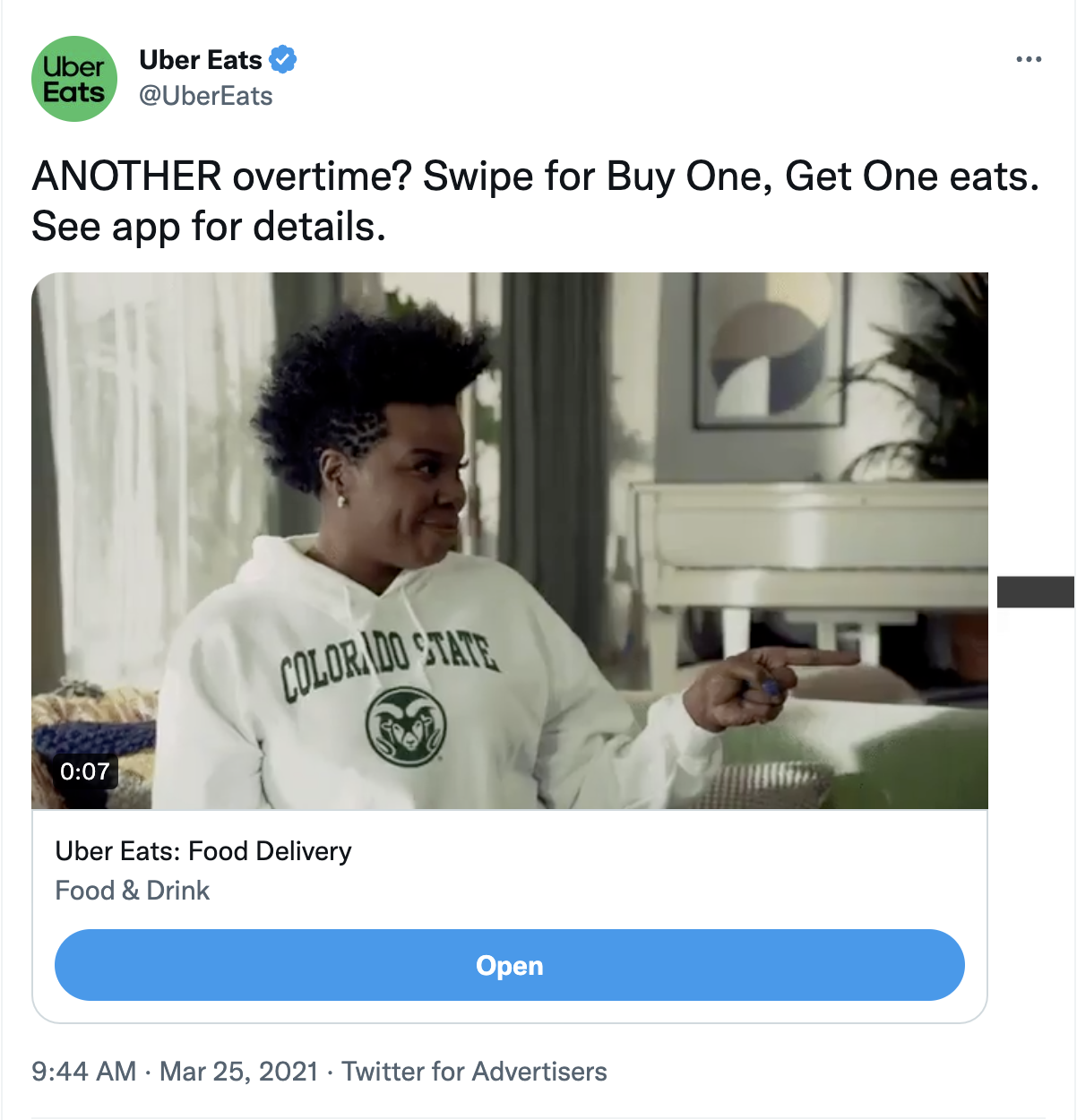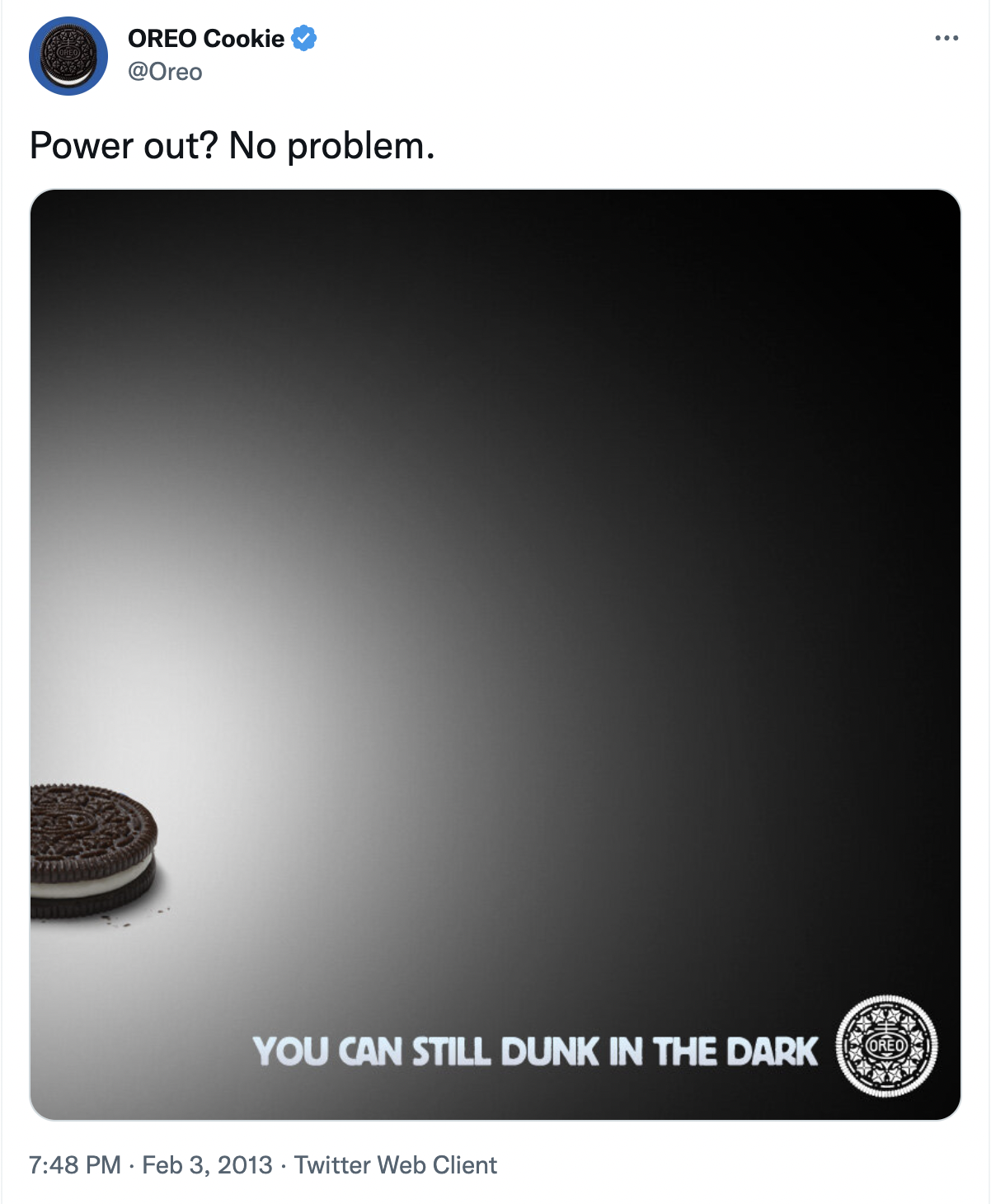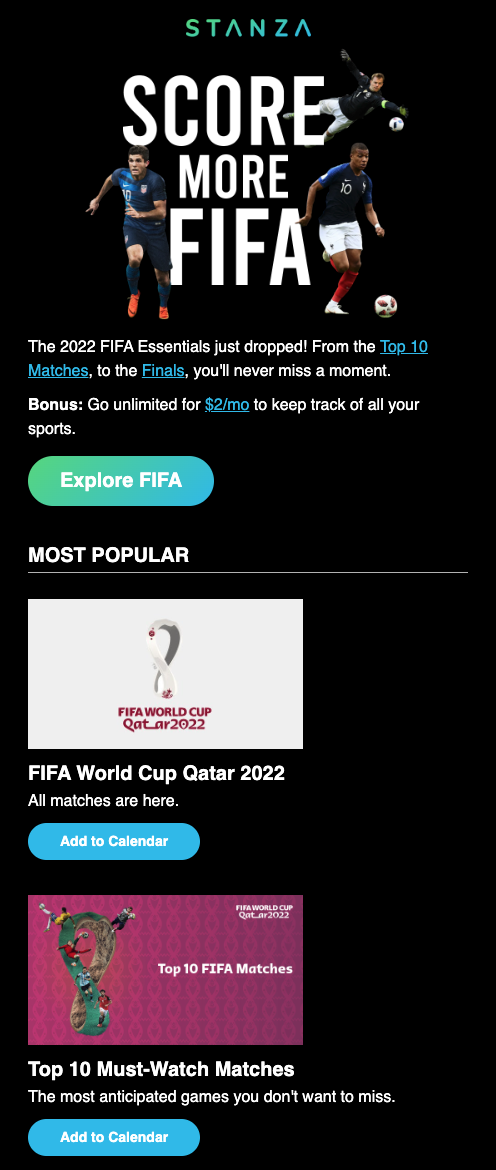Marketing
7 tips to win at digital marketing during the 2022 World Cup
The 2022 World Cup will soon be underway in Qatar and the world will be watching. Excited to join the hype or unsure if this is the right marketing move for your brand? We’ve got the answers and ideas you’re looking for.

PUBLISHED ON
No matter how you feel about sports, no one can deny the pull they have to drive engagement and bring the best (and the worst) out of people.
The World Cup 2022 is under a month away, which means in just a few weeks an estimated viewership of 5 billion people will be tuning in to watch the world’s favorite sport.
Whether you know all about moment marketing or not, your instinct is probably telling you that this is a massive opportunity to promote your brand. And you would be right. Even in the US, where soccer is only the fourth most popular sport, Twitter estimates there are 32% more people tweeting about the sport than the year before.
However, this 2022 edition is surrounded by significant controversy, and choosing to piggyback on the event of the year might not be the smartest choice for your brand. If you’re wondering if you should do some World Cup marketing or are looking for tips to make the most of the event, we’ve got you covered.
Table of content
1. Know your audience
2. Get creative
3. Go multichannel
4. Drive engagement
5. Plan ahead… but embrace the moment!
6. Take risks
7. Keep it relevant
Should you promote your brand during the 2022 World Cup?
There’s no denying the World Cup is an exciting event for brands – huge viewership, increased consumer spending, and record-high engagement on social platforms.
However, this year’s edition is not such a straightforward choice for marketers. The 2022 World Cup has been surrounded by controversy since the announcement of the host nation, forcing brands to rethink their involvement. Human rights advocates have been calling for fans and companies to boycott the tournament for months, shedding light on the poor conditions of migrants working in the development of the football stadiums and highlighting the lack of human rights for women and the LGTBQIA+ community in Qatar.
Although a similar movement took place during the 2018 edition, this year’s World Cup has received even more criticism. In some regions, like Germany, Belgium, Denmark, and The Netherlands, several sponsors have decided to pull out to avoid associating themselves with what they see as a damaging move for their brand. Financial powerhouse ING, for example, said it would steer clear from World Cup-themed advertising due to a “human rights situation”.

Human rights advocates have been calling for brands to boycott the 2022 World Cup.
But not everyone is following along. In fact, some major sponsors are choosing to put out soft statements and continue to benefit from the reach provided by the event. A recent Nielsen report said the World Cup has the highest awareness of any sports event, and many brands have decided to leverage the tournament’s commercial opportunities.
So, should you promote your brand during the 2022 World Cup? To answer that question, you’ll have to reflect on how marketing around the tournament might impact your company and, most importantly, what feels right for your brand.
Ask yourself, “will advertising around the World Cup go against my company’s brand values or DEI statements? Does my audience have strong feelings against the event?”. If the answer is yes, your best bet will be to stay clear of World Cup-themed marketing campaigns.
Before jumping in to create World Cup-themed campaigns, reflect on how marketing around the tournament might impact your company and what feels right for your brand.
Tips to promote your brand during major sports events
Major sports events are exciting marketing opportunities – loads of people watching, big consumer spending on matchdays, and the chance to build fun and memorable campaigns.
If you’ve decided to promote your brand during the World Cup, here are seven tips to do so effectively.
1. Know your audience
It seems pretty basic, but if you have customers in France, don’t send them a #GoEngland! email. Chances are, they won't take it that well.
If you’re running an email campaign, personalize the content and segment your lists to send your subscribers tailored messages. Knowing your audience is not just about knowing where they live, their gender, or their age. It could also mean understanding how they’ve engaged with your brand, when they’re most likely to open an email or what their favorite products are by analyzing previous purchases.

Segmentation and personalization are great ways to make your emails relevant and potentially increase your ROI.
2. Get creative
OK, so you might not have the budget to produce a short film with Cristiano Ronaldo as Nike did, but that doesn’t mean you can’t be creative and come up with an exciting marketing campaign.
Apple’s “Shot on iPhone” ad was probably much more affordable than Nike’s previous example, yet equally effective. The company repurposed a simple concept (user-generated content, featuring photos taken by iPhone users) that had already proven successful and arguably won the marketing battle during the Euro 2016. This time, the pictures were soccer related and were just as powerful as the original campaign was.
At the end of the day, sport is all about emotions, and so is marketing. Being able to address those emotions can be what tips the balance in your brand’s favor.
3. Go multichannel
Why focus on one when you can deliver your message on a number of platforms? Using multiple channels to power your marketing efforts can increase your brand’s visibility and improve your results.
For example, use Twitter on match days and email in between matches to drive momentum. Grow your contact or follower lists and give your content the boost it needs to go viral by integrating email and social.

Source: Twitter
Has your business got the potential to drive your marketing efforts offline? Then why not try special in-store offers or prize draws on match days?
4. Drive engagement
Nowadays marketing is increasingly becoming a two-way conversation, rather than a one-way sales pitch. Getting users to engage with your messages can make the difference between an ordinary campaign and an extraordinary user experience.
“Brands that break through will be the ones who don’t just speak at fans, but who get them and invite them to participate in the conversation and reward their fandom.”
Twitter Marketing
Fall in love with memes and hashtags, encourage your followers to predict results, get them to share their match-day photos, or run competitions on your website. It will have an impact on your brand image, increase your reach, and help you target potential customers.
5. Plan ahead… but embrace the moment!
Just as with the news, you can usually divide marketing moments into two teams: predictable and unpredictable. The World Cup is a predictable event: We already know it's coming, we know when matches are going to take place and we can even anticipate who the top teams are going to be. This gives us time to prepare for certain situations, create campaigns, and even find the best gifs we want to use on our social media.
However, not everything can be prepared. Sometimes, unexpected things happen. Like a fan running onto the pitch to hug Messi during a Copa America 2016 match. Or the lights going out in the middle of the 2013 Super Bowl.

Source: Twitter
Be quick, turn the moment into a tweet as Oreo did, caption it with a witty quote, and prepare yourself to rule the Internet.
6. Take risks
Moment marketing is all about risk-taking. Part of reacting to unexpected situations is embracing that risk, thinking on your feet, and making the most of the moment. It’s soccer, so don’t be scared about picking sides, being witty, and making controversial remarks throughout the matches.

Don’t take yourself too seriously, but make sure you’re not being disrespectful or trivializing sensitive topics.
7. Keep it relevant
OK, so football is fun. We all love football. We’re all over-excited and filled with crazy marketing ideas to run during a World Cup final. But is it really going to be effective?
Well, if you work for an online betting company, December 18 is probably going to be the busiest day of the year. But do you really need to do live tweeting if you own a “cane and crutches for the elderly” ecommerce site? Maybe not.
So make sure you set your marketing goals and find the most effective ways to achieve them. Ask yourself “what’s the point?” before setting up a campaign and “was it worth it?” after. You’ll be able to learn from the experience and get ready for the next big thing.

Recap: World Cup 2022 marketing ideas
We said it at the beginning – this year’s World Cup will be different. The controversy surrounding Qatar is making many brands question whether they should support the event or run World Cup-themed marketing initiatives.
So, carefully reflect on whether this makes sense for your company before planning any promotions around the 2022 World Cup.
If you decide this is an event that your brand should be a part of, here are seven tips to do marketing during a major sports event:
Know your audience, personalize your content and segment your lists.
Get creative - think outside the box and speak to your clients’ emotions.
Go multichannel to increase your brand’s visibility and improve your results.
Drive engagement by turning your marketing communications into a two-way conversation.
Plan ahead… but always be ready to embrace the moment!
Take risks, and don’t take yourself too seriously!
Keep it relevant - always ask yourself: will this really be effective?
Looking for more ideas and inspiration? Subscribe to our newsletter and get our marketing tips in your inbox!








